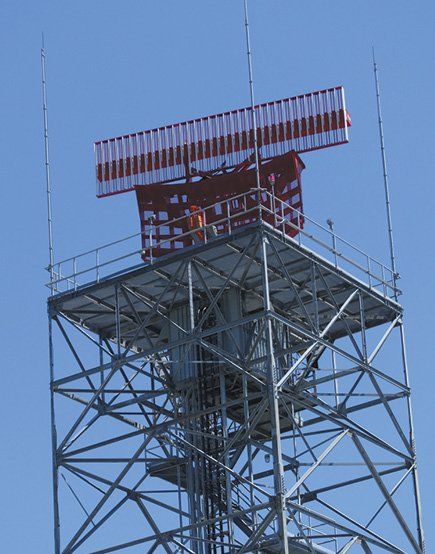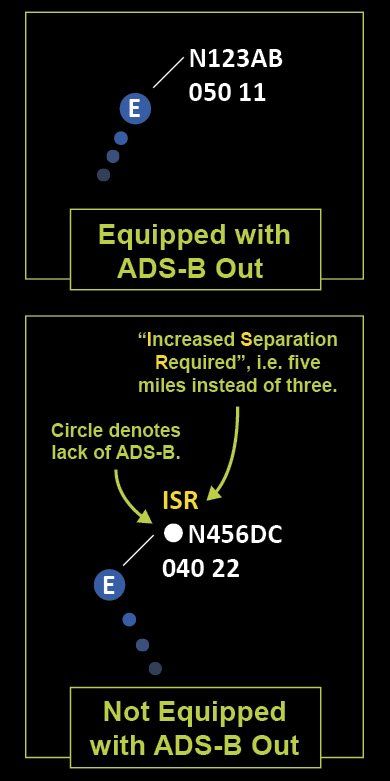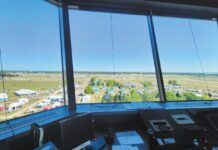During the early 2010’s, some fellow air traffic controllers and I went to a local aviation symposium. In a breezy, open hangar on our airport, various speakers covered numerous subjects like medical certification issues, search and seizure laws, and pilot and controller fatigue.
There were some touchy subjects covered in that all-day event. But no speaker drew more fury than the poor representative of a major avionics company. He was there to talk about the FAA’s NextGen initiative, ADS-B, and showcase his company’s related products. Automatic Dependent Surveillance-Broadcast was promising some big changes in flight safety and information.
However, the FAA’s ADS-B installation date of January 1st, 2020 was nearly a decade away, and he faced a hostile audience. Numerous pilots seated around us hit him on point after point. The price of the transponder units. The installation and certification headache. The lack of ADS-B coverage (at the time). The overall cost-vs.-benefit scenario. They clung to the “if it ain’t broke, don’t fix it” theme. The company rep did his best, but it was a frustrating battle.
Despite the controversy, we controllers were curious about ADS-B’s promises of additional sensor coverage, supplementing our standard radars, traffic and weather information, and additional tracking information for pilots—all interesting stuff.
Now, January 2020 is around the corner. How has ADS-B changed the game for controllers and pilots?

Photo and graphics by the author
A Case of the Mondays
Walking into my approach control on my Monday, my supervisor greeted me. “I’ve got a briefing for you,” he said, “and you’re not going to like it.” Our radar was going down for the day. Instead of our regular terminal radar, we’d be running off of our overlying Center’s long-range radars.
When operating off our shorter-range terminal radar, we need only three miles between aircraft. Also, because it’s located on our main airport, it can see basically down to the ground. Arrivals are tracked right to the threshold. Departures acquire at the runway end.
Center radars are located far outside our airspace. Their feed blends multiple radar sites and updates slower, and therefore has a slightly harder time pinpointing a target’s exact position. To account for these and other technical differences, we’re required to maintain five miles between IFR aircraft, instead of three. Plus, with the distance, angles, and signal attenuation, we could only see traffic above 4000 feet.
That last part seriously sucks. If we can’t reliably see an aircraft on radar, we obviously can’t use radar rules to separate it from other aircraft or obstacles. We must switch to non-radar separation. Here’s where things get squirrely.
Better Get Comfy
Picture two IFR aircraft being vectored for the ILS approach to an airport with a control tower. With usable radar coverage, I can line them up nose-to-tail with three miles between, since I can track them all the way to the ground. Without radar, however, when the lead aircraft drops below radar coverage, all certainty is lost. Is he on a five mile final? Three? Did he slow? Since I have no idea, I can’t assure safe and legal separation. Until the control tower calls me and tells me the first aircraft is “landing assured” I must hold the second aircraft out.
That’s with two airplanes. Imagine with five … or a dozen. Imagine having to hold stacks of aircraft and feed them in one at a time, while the rest fly circles in the sky. It’s terrible for everyone involved. It’s basically the same one-at-a-time situation you get at a non-towered airport. The only difference is that if the weather’s good and there’s a control tower, visual separation is an option (i.e. arrivals can follow each other, or tower can visually guarantee separation).
The same inconvenience goes for IFR departures. On center radars, our departures aren’t tagging on our scopes until they reach 4000 feet. Until the first departure tags up, tower cannot launch another aircraft, unless their headings diverge by more than 45 degrees within a set time or distance. For our example, imagine everyone’s going the same direction. If it’s a jet, it should take it no time to hit 4000 and acquire. What if it’s a Cessna 172? Every departure after them better settle in. It’ll be a while.
Non-radar ops are largely a waiting game. Waiting on “landing assured” calls. Waiting on departures to climb into radar coverage. Waiting for unseen pilots to report leaving a specified altitude, so we can then use that strata for other aircraft. For instance, if departure #1 is climbing to 4000 initially and reports leaving 3000, but isn’t tagged up, I can release the next departure up to 3000 since I know it’s available. Then I climb #1 to 10,000. When #1 either reports leaving 4000 or I see him tag up out of 4000, I can climb #2 to 4000.
Oh, and one other nasty inconvenience? We lose weather depiction. Centers get NEXRAD-derived weather displayed on their scope. At an approach control? The precipitation shown on our scope is derived from our terminal radar. No radar=no precip shown. We’re weather-blind.
Turning Point
I’ve worked numerous radar outages over the years. The last time our terminal radar went down for extended maintenance was a couple years ago and it was a nightmare. It seemed like 99 percent of the aircraft had no ADS-B, so we couldn’t see any of them below 4000 feet. Due to the increased workload and technical limitations, we heavily curtailed services—no practice instrument approaches, tons of holding and delay vectors, no flight following for aircraft descending below radar coverage, so much wasted space between aircraft.
Now, January 2020 is rounding the corner, and what a difference a couple of years made. During this recent outage, it seemed that at least two-thirds of the aircraft we worked had ADS-B Out transponders. It was such a relief. Why?
Due to the overlapping network of ADS-B ground stations, aircraft with ADS-B-Out transponders were trackable all the way to and from the surface. We no longer lost contact on aircraft below 4000 feet. Also, unlike the blended center radars, which update around every twelve seconds, ADS-B tracks update every second, so we had pinpoint target accuracy.
With this rock-solid coverage, if an aircraft had ADS-B Out, it was basically business as usual for them. No more waiting for “landing assured” or waiting for them to tag up on departure. Three versus five miles of horizontal IFR separation. We were far less likely to terminate VFR flight following or deny practice approaches.
It wasn’t a cure-all, of course. Any non-ADS-B aircraft still demanded non-radar rules if they were going below 4000, such as holding subsequent arrivals while awaiting a landing-assured call. Non-ADS-B traffic remaining in radar coverage still needed five horizontal miles of spacing between them and other IFR aircraft.
Also, any non-ADS-B traffic outside radar coverage—such as below 4000—was invisible to us. An ADS-B arrival could be descending into a literal swarm of non-ADS-B VFR aircraft. With no radar to spot them, it was like stepping into a minefield. We reminded our traffic to keep their eyes open.
Even with those caveats, the end results were far fewer delays and inconveniences for aircraft in our airspace. ADS-B truly improved our service for many pilots.
Drawing Attention
Another area where I’ve observed a marked change thanks to ADS-B is traffic calls. The presence of live traffic feeds in the cockpit gets pilots looking in the right direction. More and more often, I’ve called traffic, and had the pilot respond, “Yep, we’re already looking for him.”
Few things improve aviation safety more than situational awareness. To achieve that, you need information. ADS-B provides that in many ways, including threats around you.
For instance, as I mentioned earlier, if I had an ADS-B Out aircraft descend below radar coverage, I couldn’t see any conflicting non-ADS-B traffic. However, any unidentified aircraft with ADS-B Out would show up and I could call them out to traffic under my control.
Obviously, not every aircraft has live traffic in the cockpit. Traffic advisories are part of our job. Also, everyone must recognize system limitations. ADS-B traffic comes from two protocols: ADS-R and TIS-B. Via ADS-R (“R” is for “rebroadcast”), an aircraft’s ADS-B Out transponder tells the ground station where it is, and then the ground station rebroadcasts that info to nearby planes.
How about Traffic Information Services-Broadcast or TIS-B? Perhttps://www.faa.gov/nextgen/equipadsb/capabilities/ins_outs/. TIS-B is “a client-based service that provides ADS-B Out/In equipped aircraft with surveillance information about aircraft that are not ADS-B equipped. To qualify as a TIS-B target, an aircraft must be equipped with a transponder, and be within radar coverage.” Hmm—”Within radar coverage.” If a non-ADS-B Out equipped aircraft isn’t in radar coverage, then it won’t show up on ADS-B traffic displays. Without radar that’s a problem.
Still, as more aircraft become fully ADS-B-equipped, traffic awareness should only continue to rise. One note, though: even if you have traffic displays, controllers still need you to visually report the traffic in sight. “I’ve got it on (my screen / TCAS / my scope / the fish finder)” isn’t good enough for ATC regulations. You must get eyeballs on target for our visual separation rules to apply.
Filling in the Blanks
When we lost our terminal radar feed, we also lost all weather depiction on our radar scope. Is your windshield filled with a supercell thunderstorm popping off tornadoes everywhere? Sitting in an approach control radar room, I’d have no clue.
Most jets and larger aircraft have some form of weather radar onboard. That’s not historically been the case for smaller aircraft, leaving their pilots reliant on their own observations, weather advisories from ATC, and PIREPs. That information gap has been quickly filled by another ADS-B product, FIS-B (Flight Information Services-Broadcast). Along with METARs, PIREPs, and other data, FIS-B also provides NEXRAD weather radar imagery for in-cockpit display.
This was invaluable during our radar outage, during which some storms flared up. For instance, I was vectoring a Cirrus for a visual approach. I had him aimed due south at a 10 mile final. “Approach,” he said, “my screen’s showing heavy precip directly over [initial approach fix]. Looks like it’s about five miles wide.” Of course, I saw nothing. Based on his report, I gave him 20 degrees right and asked him if he needed any further turns to the right. “No, this is perfect.”
While my main weather resource—my terminal radar—was down, his onboard weather display was able to give both of us a workable weather picture. Through communication, teamwork, and his visual reporting of flight conditions as he got closer to the airport, I was able to vector him for a five mile base and clear him for the visual approach. A few years back, that process would have been far less informed.
It generally takes a lot to impress a controller. As a group, we tend to be highly cynical. With an organization as large and complex as ours, change comes in fits and starts. The promises made usually don’t match expectations.
So, during our outage, when I heard controllers around me literally saying, “Thank you, ADS-B,” that spoke volumes. We recognize that the equipment and certification costs have been a hardship on pilots. However, operationally, it has improved our coverage and our efficiency, and in turn improved our ability to serve the flying public.
Certified ADS-B Out will be required in: (With exceptions.) | |
Class A, B, and C airspace. | |
Class E airspace within the 48 contiguous states and the District of Columbia at and above 10,000 feet MSL, excluding the airspace at and below 2500 feet above the surface. | |
Class E airspace at and above 3,000 feet MSL over the Gulf of Mexico from the coastline of the United States out to 12 nautical miles. | |
Around those airports identified in 14 CFR Part 91, Appendix D (essentially below 10,000 feet MSL and within 30 NM of Class B airports). | |

Photo and graphics by the author
A Classic WhoDunIt
Even in this age of cockpits with more glass than a window factory, pilots still violate airspace pretty often. That goes for both standard classes—Class B, Class C, Class D—along with TFRs and special use airspace, such as restricted areas and prohibited airspace.
Pre-ADS-B, if the violator was squawking 1200, we had zero information on it. We just had to patiently track its target on our scope until it landed somewhere. Then we’d call the arrival airport and hope somebody on the ground picked up.
With ADS-B, though, every transponder has the aircraft’s callsign embedded. With a few keystrokes, we can display a target’s unique ICAO 24-bit transponder code and callsign. For those with privacy concerns, it’s little different than someone looking at your plane through binoculars and eyeballing your callsign.
Remember, aircraft registration information is public record, as per the FAA’s Aircraft Certification page: “Aircraft records are available to the public to facilitate aviation safety, security, and commerce, the main purpose for which the record system exists. … The public nature of the aircraft record allows for title searches by prospective buyers and/or financiers of aircraft purchases as well as other interested parties to gather information concerning the aircraft.”
Once we have the n-number, all it takes is a quick search onhttps://registry.faa.gov/aircraftinquiry/. to track down which individual or organization is responsible for an aircraft. Then—depending on the severity of the violation—we can call the airport so they can have the pilot call us, or notify the authorities so they can meet the pilot.
Violators can cause serious disruption in traffic flow. In my experience, the culprits are not typically malicious, but merely uninformed or inexperienced. If they’re not made aware of their mistakes, they’ll just continue to make them, endangering themselves and other pilots in the process. —TK
Tarrance Kramer is certainly thankful for the advantages of ADS-B while working traffic out in the Midwest.




